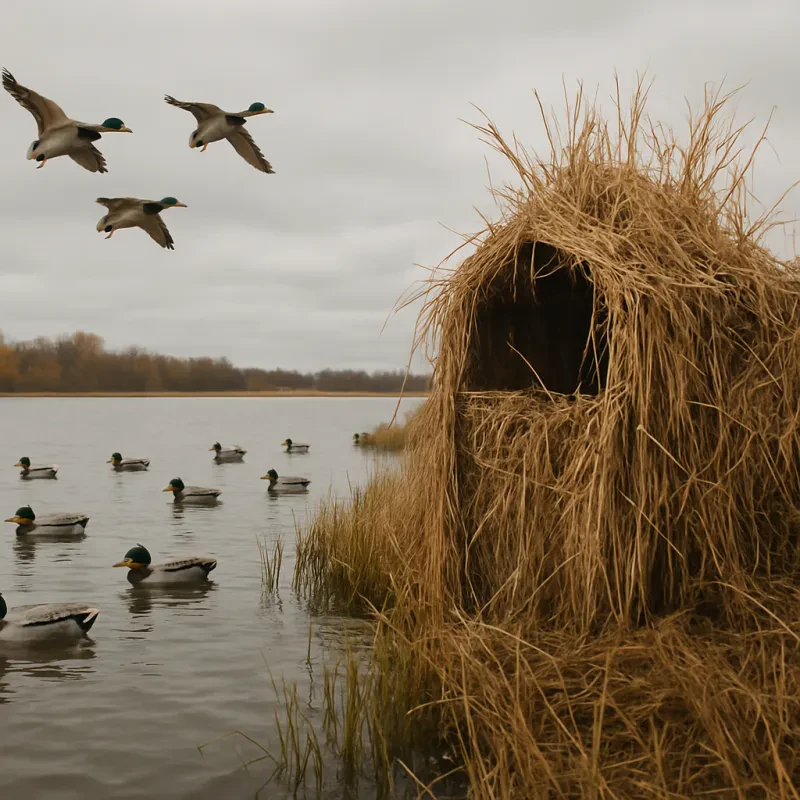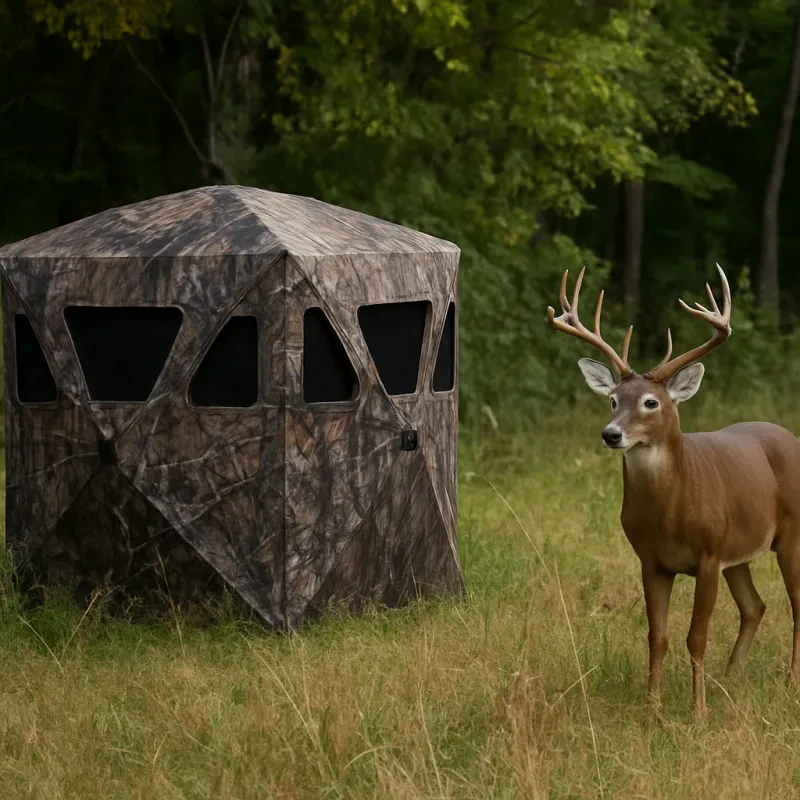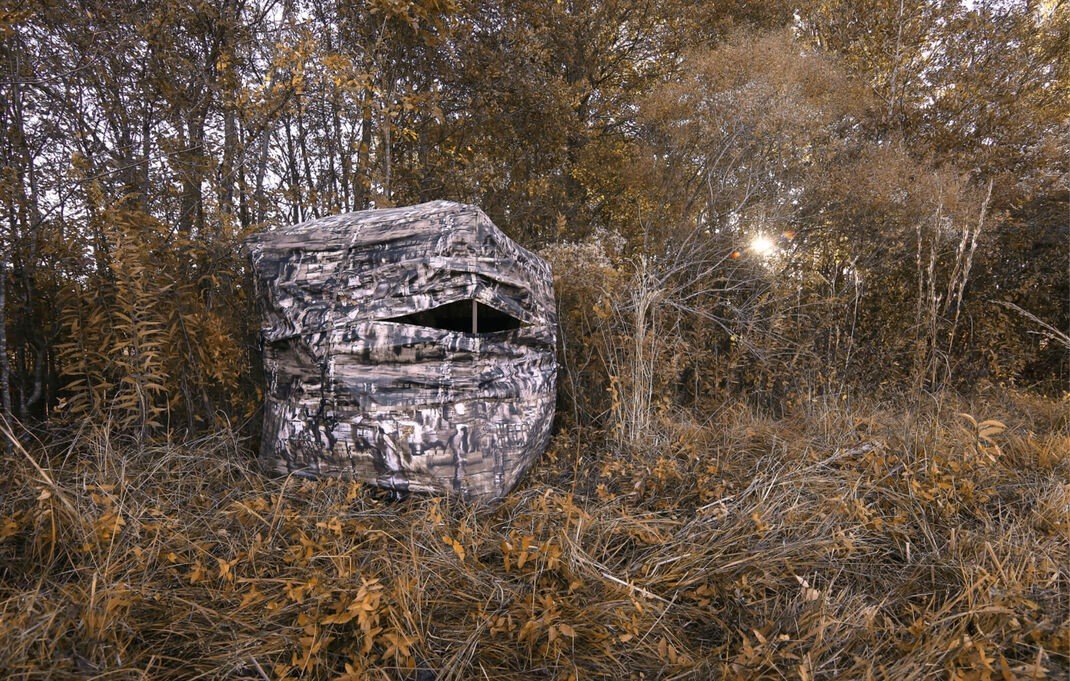When it comes to selecting a portable hunting blind, there are several important factors to consider. First and foremost, think about the type of hunting you plan to do. Different hunting situations call for different styles of blinds. For instance, if you’re hunting in densely wooded areas, a blind with a camo pattern might help you blend in with your surroundings. On the other hand, if you're hunting in open fields, look for a portable hunting blind that offers a larger setup and provides ample coverage.
Another critical aspect is the size and weight of the blind. A good portable hunting blind should be lightweight enough for easy transport but still sturdy enough to withstand the elements. Consider how many people will be using the blind and what gear you’ll be bringing along. Some portable hunting blinds are designed to accommodate multiple hunters while others are more compact and suitable for solo use. Make sure to choose a blind that meets your specific needs.
Ease of setup and take-down is also vital when selecting a portable hunting blind. The last thing you want is to struggle with your equipment just as you’re about to start your hunt. Look for blinds that can be set up quickly, preferably in under 10 minutes. Many modern designs feature pop-up mechanisms or hub systems that allow for fast assembly. Check user reviews to gauge how easy it is to set up the blind you are considering.
Finally, consider the durability and weather resistance of a portable hunting blind. It’s essential to choose a blind made from quality materials that can withstand various weather conditions. Waterproof and UV-resistant fabrics are preferable, as they ensure that your hunting blind stays dry and maintains its integrity over time. Investing in a well-constructed portable hunting blind will pay off in the long run, ensuring that you remain comfortable and concealed throughout your hunting trip.
Key Features to Look For
When searching for the perfect portable hunting blind, there are several key features to consider. A good portable hunting blind should prioritize portability, allowing you to easily transport it to your desired location without hassle. Look for lightweight materials and a compact design that enable easy carrying. Many models also come with carrying bags, making them even more convenient for hunters on the go.
Another important feature to check is the blind's camouflage design. A well-camouflaged portable hunting blind helps to blend seamlessly into the environment, which is essential for staying hidden from prey. Choose models that use realistic patterns and textures that mimic natural surroundings. Some blinds also come with additional accessories like foliage straps or attachment points for adding natural elements, enhancing your concealment.
Weather resistance is also crucial for any portable hunting blind. You want a blind that can withstand various weather conditions, from rain to wind. Look for materials that are waterproof and durable, providing protection against the elements while ensuring that your gear stays dry and secure. Additionally, features like reinforced stitching and strong zippers can enhance the longevity of your blind.
Finally, consider the interior space and layout of the portable hunting blind. You'll want enough room to comfortably move around, especially if you're hunting with a partner or accommodating gear. Some blinds offer extra height or a spacious floor plan, giving you the flexibility to sit or stand comfortably. Features like windows that can be adjusted or opened quietly can also improve your overall hunting experience.
Setting Up Your Hunting Blind
Setting up your portable hunting blind can be a game-changer for your hunting experience. A well-placed blind allows you to remain concealed while providing a comfortable spot to wait for your target. To get started, choose a location that offers good visibility and is near known animal trails or feeding areas. Look for natural cover like trees or shrubs to enhance your blind's effectiveness.
Once you’ve found the perfect spot, it’s time to get your portable hunting blind set up. Most models are designed for quick assembly, so you won’t have to waste precious time in the field. Make sure to lay out the blind in a way that allows for easy access and shooting angles. Pay attention to wind direction as well; setting up your blind downwind from your target can prevent your scent from giving you away.
Once your portable hunting blind is up, take a moment to adjust the interior for maximum comfort. Bring along cushions or seats to make your long wait more comfortable. Keep essential gear, like your bow or rifle, within easy reach. If your blind has windows, ensure they are positioned for clear vantage points while remaining hidden from view. Camouflage netting or natural materials can also be added to further blend your blind into the surroundings.
Finally, remember to maintain your blind. After each use, check for any damage or wear and tear. Keeping your portable hunting blind in top shape will not only extend its lifespan but will also ensure it remains effective for your next outing. With the right setup and care, your portable hunting blind can help you achieve a successful hunting season.
Tips for Successful Hunting Experiences
When embarking on your next hunting adventure, leveraging a portable hunting blind can significantly enhance your experience. To make the most of this valuable gear, consider the following tips. First and foremost, choose the right location. Set up your portable hunting blind in areas where wildlife frequently visits. Look for signs like tracks, droppings, and food sources. Ensuring that you’re in a prime location increases your chances of a successful hunt.
Next, practice your setup skills. Being able to quickly and quietly assemble your portable hunting blind is essential. Spend some time beforehand to familiarize yourself with the instructions and practice in your backyard. This will help you feel more confident and reduce noise when you're in the field. Remember, stealth is key when hunting, and a noisy setup can scare away potential game.
Another important aspect is camouflage. To effectively use a portable hunting blind, consider blending it into the natural surroundings. Use natural materials like branches or leaves to break up the outline of the blind. Additionally, wear clothing that matches the environment to remain undetected. The goal is to make yourself and your blind less visible, thus increasing your chances of success.
Lastly, stay patient and quiet once you’re settled in your portable hunting blind. Movement and noise can easily alert animals, so practice stillness and silence. Bring a book or some snacks to help pass the time while you wait. Enjoying the experience and maintaining focus on the surroundings is just as important as the hunt itself. By following these tips, you can elevate your hunting outings and improve your overall success.


